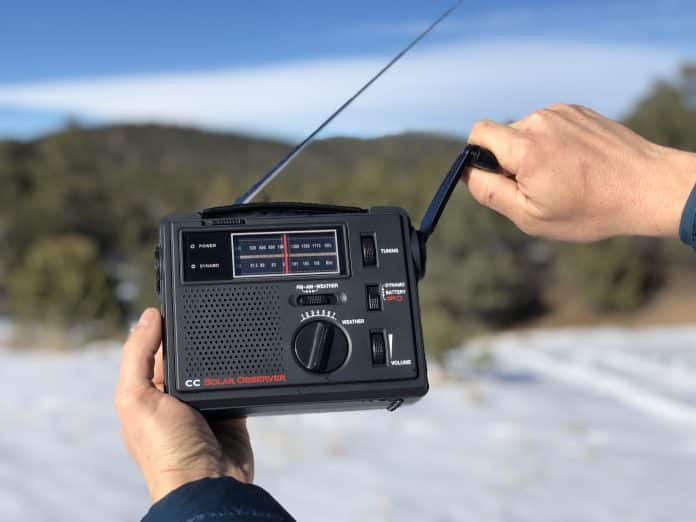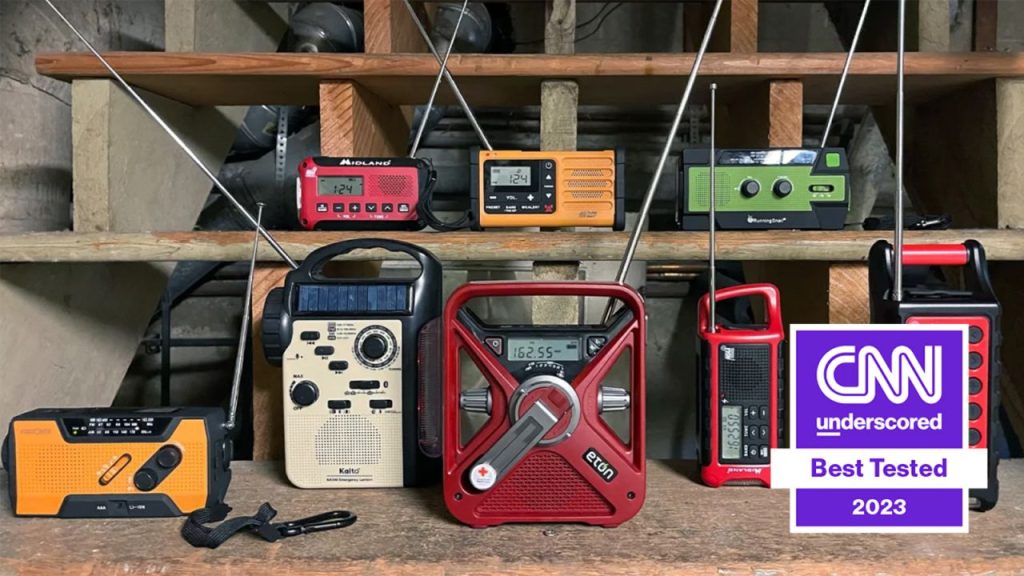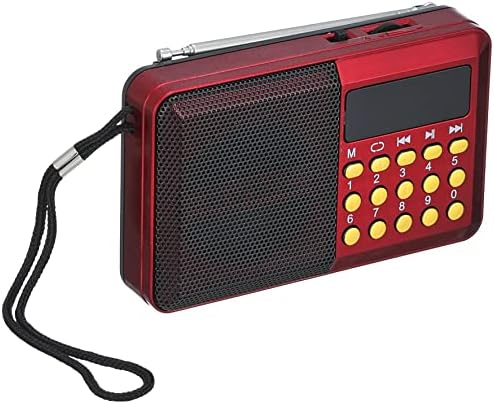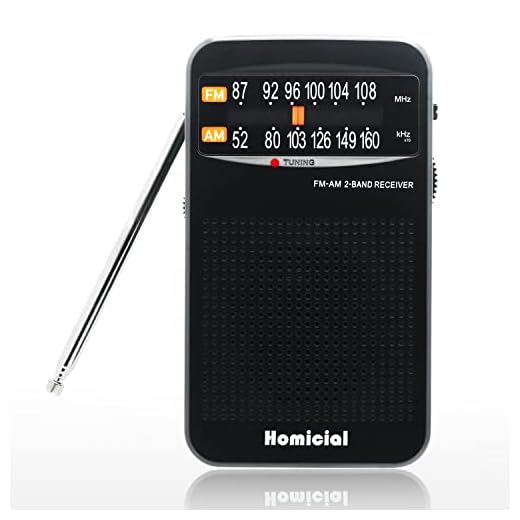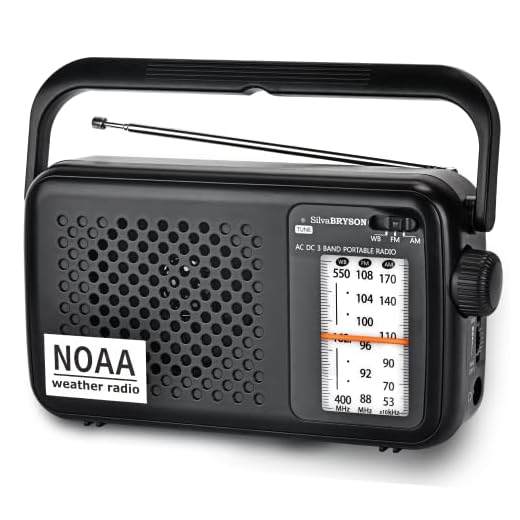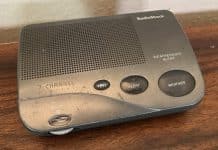In a world driven by technology, where electricity is a constant necessity, the concept of a radio that functions without it seems almost too good to be true.
However, there is indeed a radio that defies the conventional limitations of power sources. This innovative device harnesses the sun’s power, offering a sustainable and portable solution to keep you connected to the world, even in the most remote locations.
With this radio, you can enjoy your favorite tunes or stay informed with the latest news, all without relying on electricity.
Review contents
Types of Radios That Work Without Electricity
When it comes to radios, we often think of them as reliant on electricity. However, several types of radios can operate without power outlets or batteries.
These radios are handy when access to electricity is limited, such as during emergencies, outdoor activities, or in remote areas without grid access. This article will explore three radios that work without electricity: solar, hand-crank, and battery-powered radios.
Solar-Powered Radios
How Do Solar-Powered Radios Work?
Solar-powered radios harness the power of the sun to function. They are equipped with small solar panels that convert sunlight into electrical energy.
This energy is then stored in built-in rechargeable batteries, allowing the radio to be used without direct sunlight. Solar-powered radios also often come with a hand-crank or battery backup option, ensuring continuous operation under all conditions.
Advantages of Solar-Powered Radios
One of the main advantages of solar-powered radios is their sustainability. These radios eliminate the need for disposable batteries or reliance on electricity grids by utilizing solar energy.
This makes them eco-friendly for those looking to reduce their carbon footprint. Additionally, solar-powered radios are highly portable and can be used anywhere there is sunlight, making them ideal for outdoor adventures and off-grid living.
Limitations of Solar-Powered Radios
While solar-powered radios are an excellent option for many, they do have some limitations.
The most obvious limitation is their dependence on sunlight. When sunlight is scarce or access to direct sunlight is limited, these radios may not be the most reliable choice.
Furthermore, solar-powered radios may take longer to charge than other radios, so planning and ensuring they are fully charged before use is essential.
Hand-Crank Radios
How Do Hand-Crank Radios Work?
Hand-crank radios, also known as wind-up radios, are designed to be powered by human effort. They feature a built-in crank that, when turned, generates mechanical energy.
This energy is then converted into electrical energy, powering the radio. Hand-crank radios often come with rechargeable batteries to store the generated energy, allowing for prolonged use even after the cranking has stopped.
Advantages of Hand-Crank Radios
The main advantage of hand-crank radios is their reliability. If you have the strength to turn the crank, you can power the radio and stay connected.
This makes hand-crank radios an excellent choice during emergencies or when electricity is not readily available. Hand-crank radios can also be a portable power source, allowing you to charge other small electronic devices.
Limitations of Hand-Crank Radios
Despite their reliability, hand-crank radios do have a few limitations. The most notable limitation is the physical effort required to operate them.
Continuous cranking can become tiring, especially during prolonged use. Hand-crank radios may not be the best choice for those with physical limitations or requiring extended radio usage.
Battery-Powered Radios
How Do Battery-Powered Radios Work?
Battery-powered radios are perhaps the most familiar type of radio that does not require electricity. These radios rely on disposable or rechargeable batteries to function.
They are designed to be energy-efficient, allowing for long battery life and extended usage. Battery-powered radios often come in various sizes and designs, ranging from compact portable options to larger fixed models.
Advantages of Battery-Powered Radios
One of the main advantages of battery-powered radios is their convenience. These radios can be powered and used instantly without additional charging or cranking with readily available batteries.
Battery-powered radios are also generally more affordable compared to other types, making them accessible to a wide range of users. Additionally, they offer various options regarding size, features, and compatibility with various frequency bands.
Limitations of Battery-Powered Radios
The primary limitation of battery-powered radios is the need for a constant supply of batteries. Disposable batteries can be expensive and produce unnecessary waste, while rechargeable batteries may require access to electricity for charging.
It’s essential to consider the availability of batteries and the environmental impact when relying on battery-powered radios for extended periods.
Alternative Power Sources for Radios
In addition to the three main types of radios mentioned above, alternative power sources can be used to operate radios without electricity.
These alternative power sources can provide additional options for powering radios in specific situations.
Wind-Up Radios
As the name suggests, wind-up radios are powered by winding a built-in crank. Turning the crank, mechanical energy is generated and converted into electrical energy, powering the radio.
Wind-up radios are similar to hand-crank radios but may have a different design or mechanism. They offer a portable and reliable power source, making them suitable for emergencies and outdoor activities.
Hydro-Powered Radios
Hydro-powered radios utilize the force of flowing water, such as a stream or river, to generate electricity. When placed in moving water, they often come with small turbines or waterwheels that produce electrical energy.
While hydro-powered radios are not as standard as other types, they can be a practical option in areas near water sources or during camping trips near rivers and streams.
Thermoelectric Radios
Thermoelectric radios work by utilizing the temperature difference between two surfaces. They employ the Seebeck effect, which generates electricity when there is a temperature gradient.
Thermoelectric radios can produce electrical energy by utilizing the temperature difference between the ambient air and the inside of the radio. These radios are less common than other types but offer an alternative power source for specific scenarios.
Portable Versus Fixed Radios
Radios that work without electricity can be further categorized into two main types: portable radios and fixed radios. Depending on the intended use and location, each type offers distinct advantages and considerations.
Portable Radios
Portable radios are designed to be easily carried and used on the go. They are typically lightweight and compact, making them convenient for outdoor activities, camping trips, or emergencies.
Portable radios often have built-in handles, belt clips, or straps to enhance their portability. They can be powered by various means, including solar energy, hand-cranking, or batteries.
Fixed Radios
Fixed radios, on the other hand, are intended for permanent installation in a specific location. These radios are often larger and more powerful than portable models, offering better reception and sound quality.
Fixed radios, such as homes, offices, or vehicles, are commonly used in fixed installations. They can be powered by various means, including solar panels, external power sources, or battery backups.
Applications of Radios Without Electricity
Radios that work without electricity have many applications and can be invaluable in various situations.
Emergency Situations
Communication is crucial for receiving updates, accessing information, and coordinating actions during emergencies. Radios that work without electricity are ideal for emergencies, as they do not rely on power outlets or stable electricity grids.
Whether it’s a natural disaster, power outage, or other unforeseen events, these radios can provide reliable communication and keep you connected to emergency services and critical information.
Outdoor Activities
Exploring the great outdoors often means venturing into areas with limited or no access to electricity. Whether hiking, camping, or other outdoor activities, having a radio that works without electricity can be essential.
These radios let you stay informed about weather conditions, receive important alerts, and even provide entertainment during outdoor adventures.
Remote Areas and Off-Grid Living
In remote areas where reliable electricity is scarce or non-existent, radios that operate without electricity are a lifeline for communication and information.
They can be handy for those living off-grid or in rural areas, where access to traditional power sources may be limited. These radios enable individuals and communities to stay connected, informed, and entertained without relying on external power sources.
Considerations Before Choosing a Radio
Before choosing a radio that works without electricity, it’s essential to consider a few factors. These factors can help ensure you select the most suitable radio for your specific needs.
Power Source Reliability
Different radios use different power sources, and it’s essential to evaluate the reliability of each power source based on your circumstances.
Consider factors such as the availability of sunlight for solar-powered radios, the physical effort required for hand-crank radios, or the availability and cost of batteries for battery-powered radios. Choose a power source that aligns with your needs and the conditions in which the radio will be used.
Construction and Durability
The construction and durability of the radio are essential considerations, especially for portable options. Look for radios that withstand rough handling, impacts, and exposure to the elements.
A rugged and durable design will ensure the longevity and reliability of the radio, particularly in outdoor or emergencies where it may be subjected to harsh conditions.
Frequency Band Compatibility
Different radios operate on different frequency bands, and ensuring that the radio you choose is compatible with the frequencies used in your area is crucial.
This will ensure optimal reception and the ability to tune in to your desired stations or channels. Check the specifications of the radio and verify its compatibility with the frequency bands used in your region.
Additional Features and Functionality
Consider the additional features and functionality that the radio offers.
Some radios may include built-in flashlights, USB charging ports, weather alerts, or the ability to attach external antennas. These features can enhance the utility and versatility of the radio, providing additional value for your specific needs.
Maintenance and Care for Electricity-Free Radios
Maintenance and care are necessary to ensure longevity and optimal performance for your electricity-free radio.
Cleaning and Dusting
Regularly clean and dust your radio to prevent the accumulation of dirt, debris, or moisture that could affect its performance.
Use a soft cloth or a gentle brush to remove contaminants from the exterior and the control buttons. Avoid using harsh cleaning agents or immersing the radio in water, as this may cause damage.
Battery Replacement
If your radio relies on batteries, checking their condition and replacing them periodically is essential.
Old or depleted batteries can cause diminished performance or even damage the radio. Follow the manufacturer’s instructions for proper battery replacement and disposal.
Storage and Protection
Store your radio in a dry and secure location when not in use. Please protect it from extreme temperatures, humidity, and direct sunlight, which can affect its internal components and overall functionality.
Store the radio in a protective case or cover to prevent dust, scratches, or accidental damage during transportation or storage.
Conclusion
Radios that work without electricity offer a reliable and versatile communication and information access solution when electricity is limited or unavailable. Whether you opt for a solar-powered radio, a hand-crank radio, or a battery-powered radio, each type has advantages and limitations.
Consider your needs, power source reliability, construction, frequency band compatibility, and additional features before selecting the most suitable radio. Your electricity-free radio can keep you connected, informed, and entertained for years with proper maintenance and care.
So, go ahead and choose the radio that fits your needs, and never miss out on staying connected, no matter the circumstances.
Battery Operated Transistor Radio, AM/FM Pocket Radio with Loud Speaker, Earphone Jack, Best Reception Long Antenna for Walking, Running, Camping, Jogging – Portable Radios Powered by 2 AA Batteries
DreamSky AM FM Portable Radio Plug in Wall or Battery Operated for Home & Outdoor, Strong Reception, Large Dial Easy to Use, Transistor Antenna, Headphone Jack, Small Gifts for Seniors Elderly
$25.99 in stock
AM FM Radio Portable – Best Reception Transistor Radio/Longest Lasting Battery Operated Radio (2AA) / FM AM Pocket Radio. Mono Headphone Socket, by Vondior (Black)
SilvaBRYSON NOAA Weather Portable Transistor Radio,Emergency AM/FM Radio Plug in Wall or Operated by 2 x D Batteries with Big Speaker, Best Reception, Large Tuning Knob, Clear Dial, Earphone Jack
Retekess TR626 Portable AM FM Radio with Bluetooth, Plug in Radio, LW, DSP chip,Powered by AC or D Battery, Short Wave Radios for Garages,Home,Outdoors
$29.99 in stock

